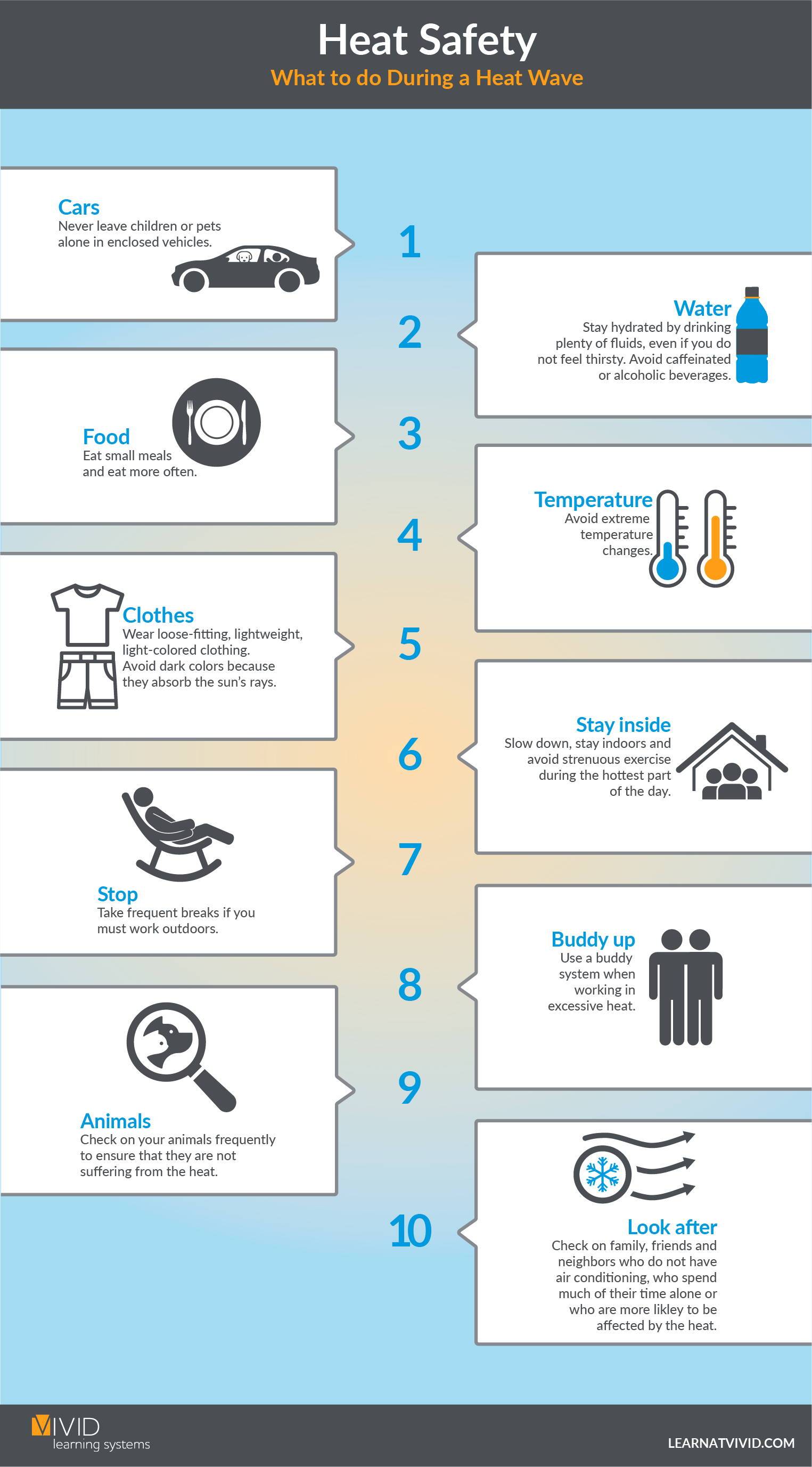Heat Stress Prevention

A day at the zoo should be spent taking pictures of giraffes and fighting for the best whale-watching spot at the underground glass window, not sprawled out on a bench trying not to throw up and feeling like you’re going to pass out. But that’s where I found myself one 90-degree July day.
My parents had just picked me up from summer camp and decided it would be fun to stop by the zoo on the way home. I had spent the past week running around in the sun with new friends- climbing through ropes courses, going on hikes and flying down the giant Slip ‘N Slide. And, in typical 11-year-old fashion, forgetting to drink any water. The only liquids I had consumed over the previous five days had been a small cup of Kool-Aid at each meal… not the most efficient way of staying hydrated in the heat.
So there I was, lying across a dirty wooden bench between the monkey enclosure and the exotic bird cages, trying not to think about how many cockatoos had pooped where my head was now resting. After my mom forced me to guzzle down three full bottles of water I began to feel the effects of dehydration and heat stress subsiding. My headache started to fade, I could feel my strength returning and I no longer thought I was going to toss my cookies into the orangutan exhibit at any given moment. But I had learned my lesson- stay hydrated!
Heat stress can occur both outdoors and in indoor environments where tasks require warm conditions or there is insufficient building insulation, ventilation or cooling. The symptoms I exhibited- headache, dizziness, weakness, and nausea- were signs of heat exhaustion. Those who fall prey to heat exhaustion may also experience heavy sweating, muscle cramps and shallow breathing. To treat heat exhaustion get to a cool location, drink cool fluids, remove any unnecessary clothing, and cool your body with water or a cold compress.
Other types of heat stress, as well as their symptoms and treatment, include:
Heat stroke
Symptoms: Hot dry skin or profuse sweating, hallucinations, chills, throbbing headache, high body temperature, confusion dizziness, slurred speech, loss of consciousness, seizure
Treatment: Call 911, move to a shaded or air-conditioned are, cool body with water or cold compress
Heat cramps
Symptoms: Muscle pain and muscle spasms usually in the abdomen, arms or legs
Treatment: Rest and drink water, a sports drink or juice to restore lost fluids and electrolytes
Syncope (fainting or dizziness that occurs during activities in a hot environment)
Symptoms: Dizziness, fainting, dry mouth, excessive thirst, excessive sweating, headache, nausea, vomiting
Treatment: Sit or lie down in cool place, slowly drink water, juice or a sports beverage, cool body with water or cold compress
Heat rash
Symptoms: Red cluster of pimples or small blisters, most likely on the neck and upper chest, in the groin, under the breasts, and in elbow creases
Treatment: Keep the affected area dry and try to work or play in a cooler, less humid environment if possible
According to OSHA, heat stress causes more than 300 deaths per year in the U.S. The risk factors for heat stress include high temperatures and humidity, direct sun exposure, limited air movement, low liquid intake, heavy physical labor, and lack of recent exposure to hot workplaces or environments.
OSHA recommends preventing heat stress by scheduling activities that will take place in hot outdoor conditions for the earlier part of the day, taking frequent rest breaks in a shaded area while working or playing outside, gradually exposing yourself to longer hours in hot work environments over a period of time, and drinking plenty of cool water throughout the day.
When the weather heats up, it’s important to be mindful of the increased threat of heat stress. If there’s one thing summer camp taught me it’s to keep in mind the risks of heat stress and take the necessary measures to avoid it. Don’t find yourself lying on a bench at the zoo like I did. If you aren’t proactive and intentional about preventing heat stress, you’re putting yourself at risk for illness, stroke and even death.
Learn more about workplace health and safety course.



